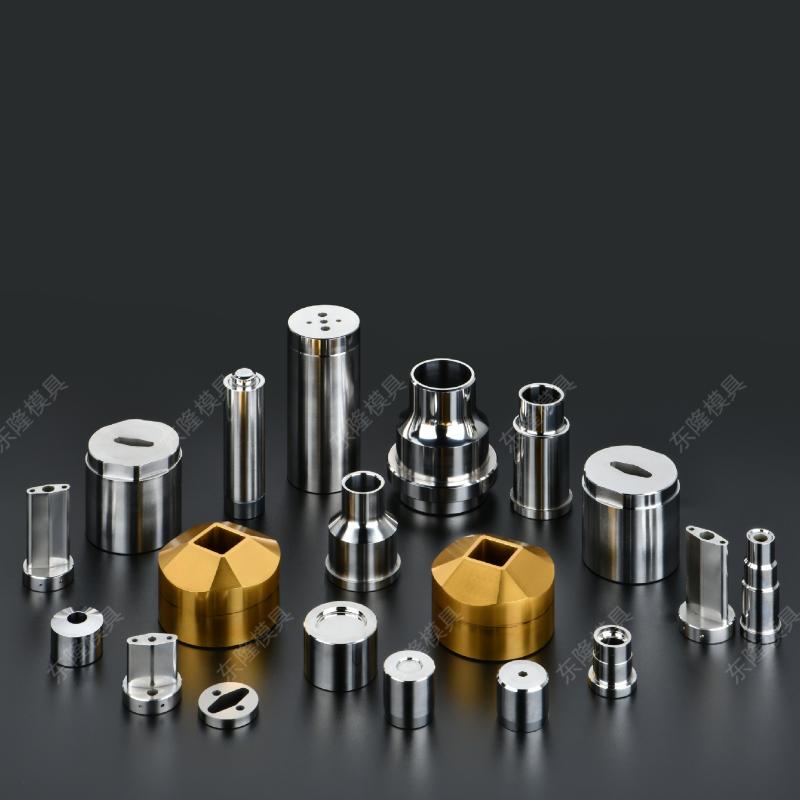Steel Dies are critical tools used in a wide range of manufacturing processes, including stamping, injection molding, die casting, forging, and more. The performance and longevity of a die directly affect production efficiency, product quality, and overall manufacturing costs. Therefore, understanding the key factors that influence the lifespan of Steel Dies is essential for both manufacturers and end-users.

1. Material Hardness and Steel Selection
The choice of die steel is the foundation of a durable and efficient die. Different applications require different steel grades based on their working environment:
Cold work dies often use steels like D2, SKD11, or Cr12MoV due to their high hardness and wear resistance.
Hot work dies (e.g., for die casting) typically use H13, SKD61, or 8407, which offer excellent thermal fatigue resistance.
Plastic injection dies may use P20, 1.2311, or S136 depending on the required surface finish and corrosion resistance.
The hardness of the steel must be optimized — too soft, and the die wears quickly; too hard, and it may crack under impact. Proper hardness selection ensures a balance between wear resistance and toughness.
2. Heat Treatment Process
Heat treatment significantly impacts the microstructure and mechanical properties of die steel. Processes like quenching, tempering, nitriding, or vacuum hardening can greatly enhance the die’s:
Surface hardness and wear resistance
Toughness and impact strength
Thermal stability and fatigue resistance
Improper heat treatment (e.g., over-quenching or insufficient tempering) can lead to internal stress, cracking, distortion, or premature failure. Thus, strict control of heat treatment parameters and uniform temperature distribution are critical to achieving the desired performance.
3. Die Design and Structural Optimization
A well-designed die is less prone to stress concentration, thermal fatigue, and uneven wear. Key design elements that influence die life include:
Uniform wall thickness to avoid hot spots or weak areas
Proper clearance between punch and die to minimize edge chipping
Sufficient draft angles and venting (for injection or die casting dies)
Optimized cooling channels to prevent overheating and ensure dimensional stability
Using simulation software (such as Moldflow or DEFORM) during the design phase can help identify stress points and optimize geometry before production.
4. Working Conditions and Load Cycles
The operating environment and usage frequency directly affect die durability. High-speed stamping, high-pressure injection, or large batch production will subject dies to:
Repeated mechanical impact
High thermal cycling
Abrasive wear from materials
Corrosive effects from certain plastics or alloys
Understanding the expected working conditions enables manufacturers to tailor the die design, material, and surface treatments (e.g., PVD coating, nitriding) accordingly.
5. Maintenance and Cleaning Practices
Even the best-designed die requires proper care. Lack of routine maintenance is one of the most common causes of premature die failure. Key practices include:
Regular cleaning to remove buildup, residues, or metal particles
Inspection for wear or cracks after production runs
Timely polishing or resurfacing to maintain dimensional accuracy
Lubrication to reduce friction and wear
Establishing a preventive maintenance schedule can significantly extend the usable life of the die and reduce unexpected downtimes.
The lifespan of a Steel Die is not determined by a single factor but by a combination of material selection, heat treatment, design optimization, working environment, and maintenance discipline. By carefully considering each of these elements, manufacturers can enhance die durability, improve productivity, and reduce long-term costs.











